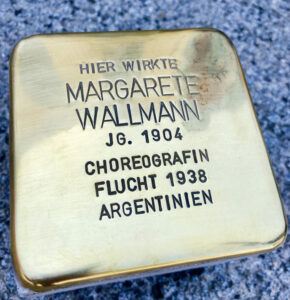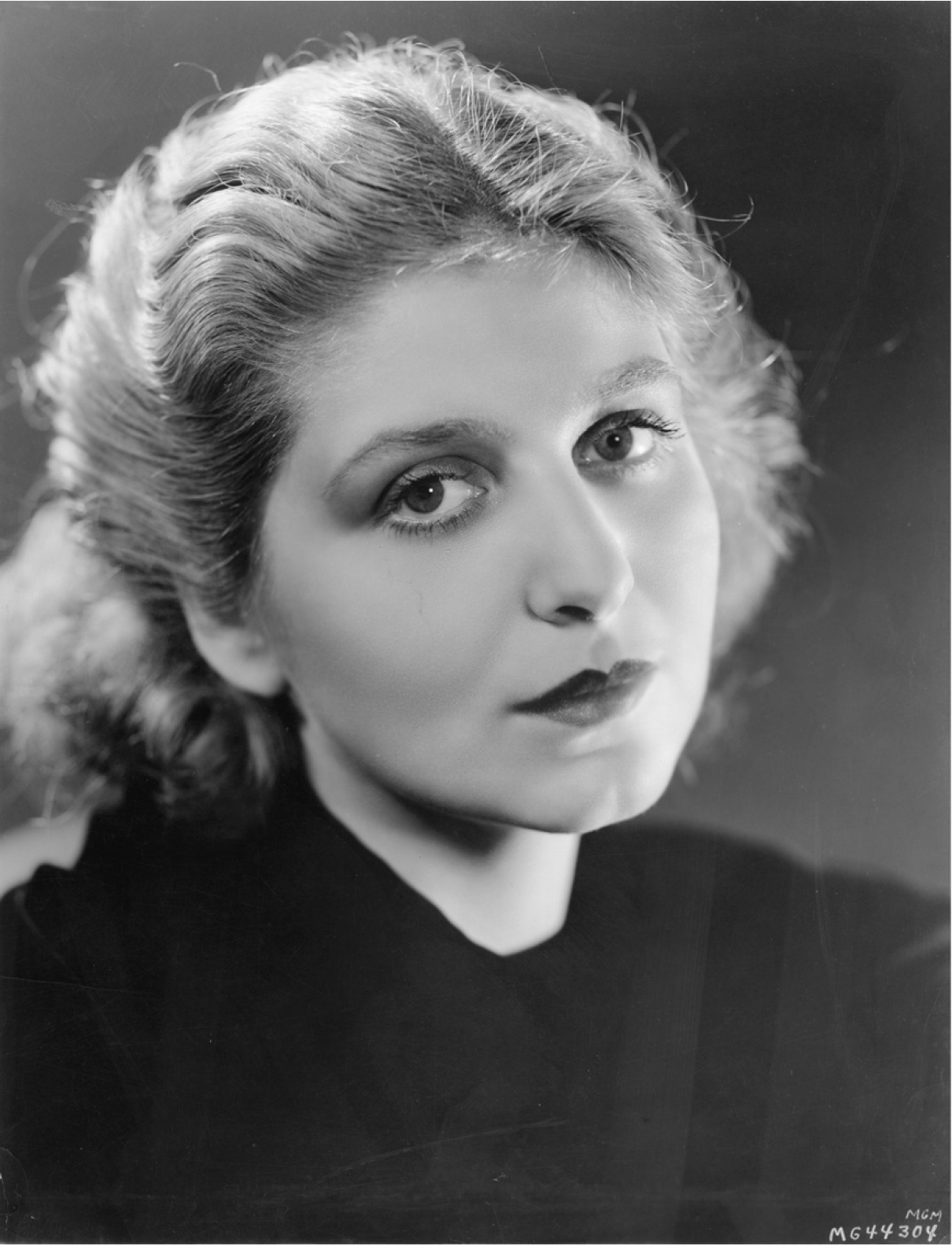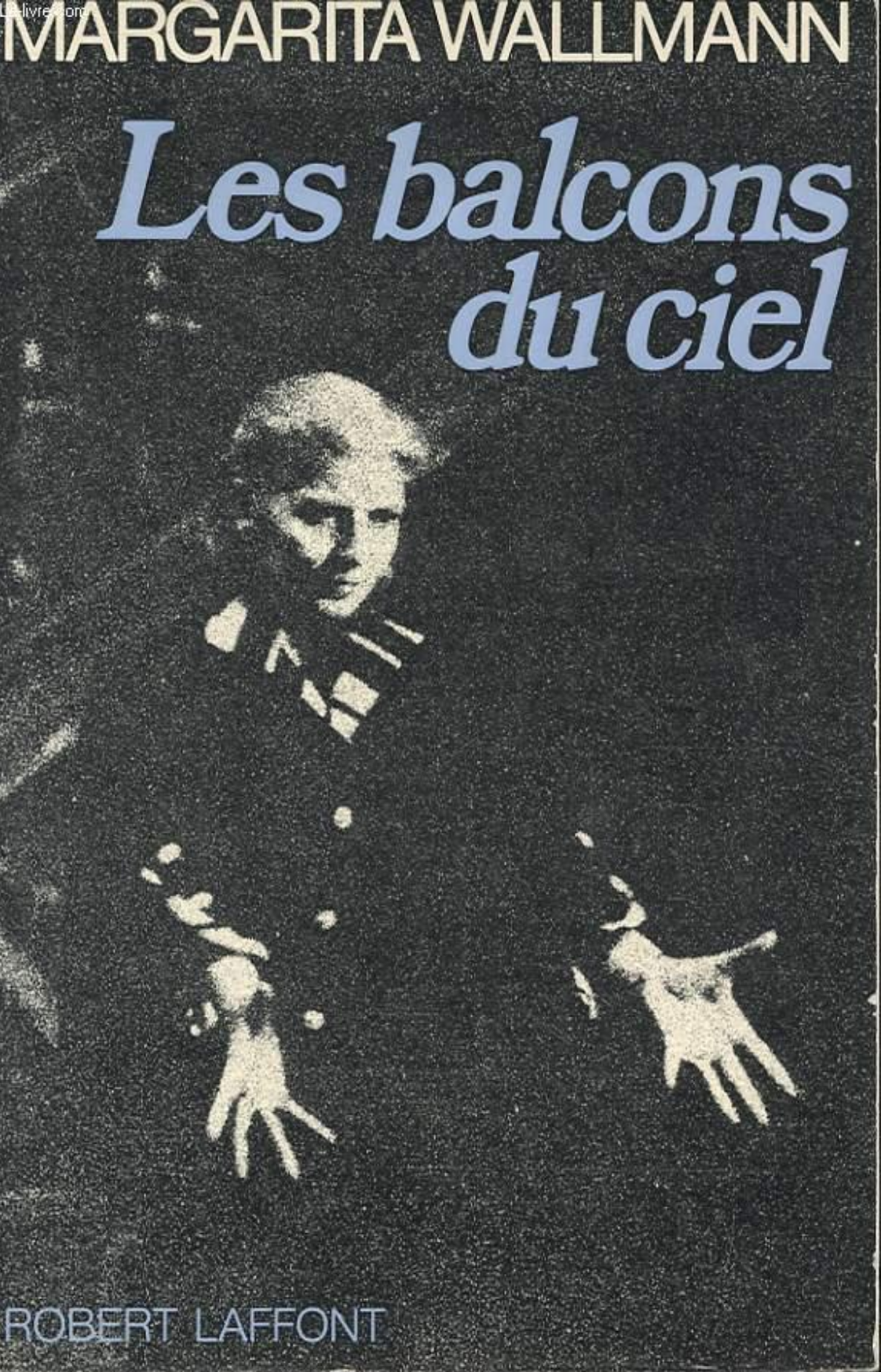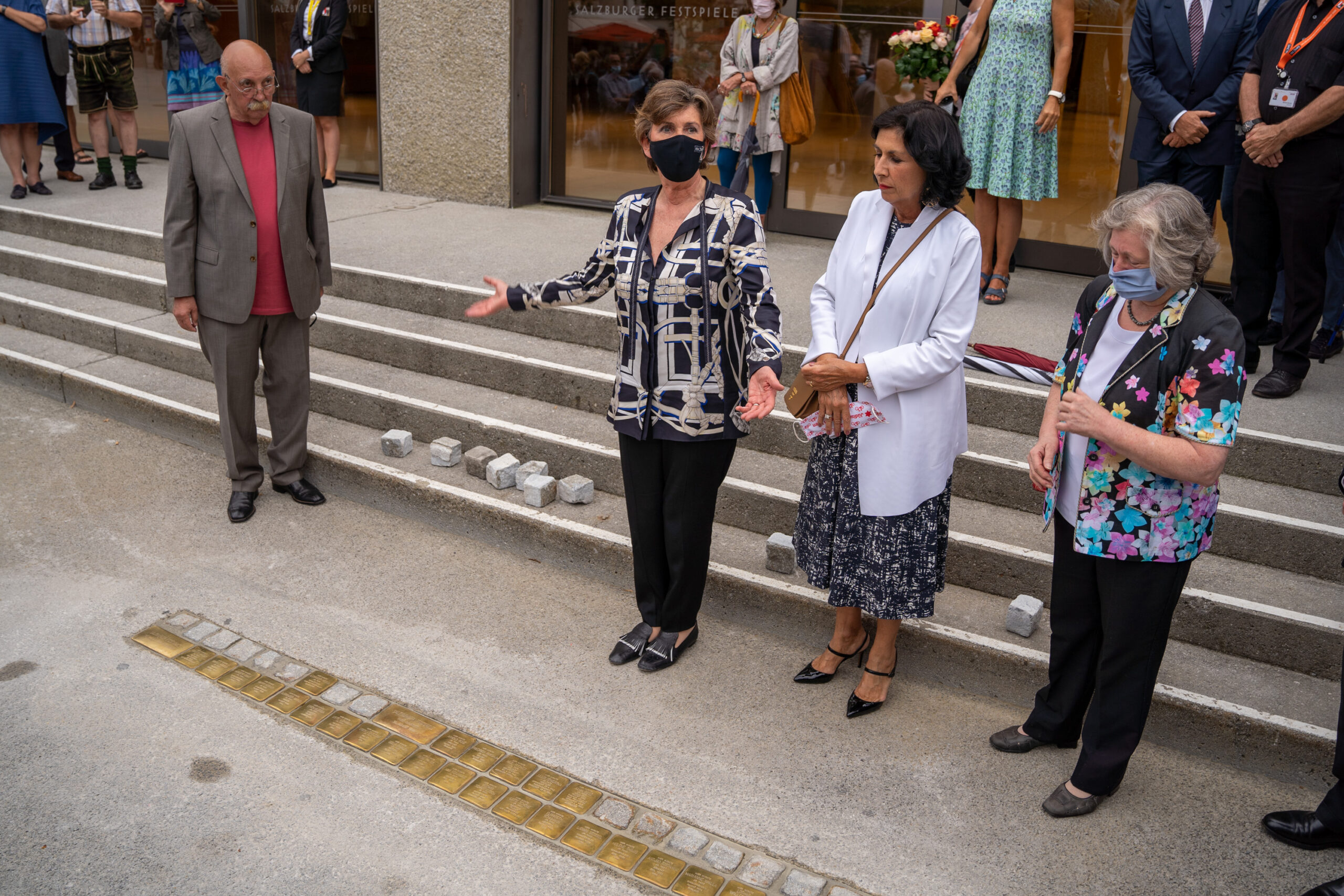Margarete WALLMANN was born at 10 Holsteiner Ufer in Berlin on June 22, 1904. She was the older of the two daughters of a Jewish couple – Paul Wallmann, a leather dealer born in Stralsund on June 21, 1870, and his wife Selma Wallmann neé Daniel, born in Krefeld on April 1, 1881.
The birth and origin of the once world-famous artist Margarete WALLMANN lay in the dark for decades, as her family and private life were kept secret in her glamorous autobiography Les balcons du ciel: her Jewish birthplace, her change of religion, her baptism in the parish of St. Ludwig in Berlin and the death of her parents in Bergen-Belsen concentration camp were all left out of the book.
But her silence on these matters wasn’t unjustified given the hostility to which artists of Jewish origin were exposed in their anti-Semitic environment.
Margarete WALLMANN was a dancer and modern dance choreographer in Berlin when director Bruno WALTER invited her to bring her »Tänzer-Kollektiv« [Dance Collective] ensemble to perform at the Salzburg Festival in 1931.
On August 15, 1931 Christoph Willibald Gluck’s opera Orfeo ed Euridice (Orpheus and Eurydice) premiered at the Salzburg Festival, conducted by Bruno WALTER – »A master stroke« enthused leading critics.
The choreography, on the other hand, seemed novel and strange, but was nevertheless highly praised: Margarete WALLMANN had been able to raise the art of dance »to wonderful heights«, wrote the author Emil Ludwig in the features section of the Neue Freie Presse on August 25, 1931.
Das jüngste Gericht [Judgment Day] is a »movement drama« or »dance mystery play« by Felix Emmel, which Margarete WALLMANN premiered with her dance ensemble on August 22, 1931 in the Festival House.
WALLMANN was director, choreographer and dancer (»Angel of Grace«) all in one. Critics praised the performance profusely and even saw it as a counterpart to Salzburg’s Everyman:
… And the experiment that Felix Emmel and Margarete Wallmann undertook was completely successful. I would like to describe this drama – ballet is a far too banal and misleading name that should be avoided – as a counterpart to Everyman. […]
Some in the huge crowd of enthusiastic spectators who broke out in the roaring, constantly renewed applause at the end of the performance felt that they had witnessed the premiere of a work that has a great future ahead of it. M. S.
Neuigkeits-Welt-Blatt, August 29, 1931, p. 6
Margarete WALLMANN’s furious art of modern choreography remained a leading item at the Salzburg Festival until 1937. In addition to the previously mentioned productions of Orfeo ed Euridice and Das jüngste Gericht the Festival annals include productions of Goethe’s Faust, Carl Maria von Weber’s Oberon und Euryanthe, Mozart’s Don Giovanni and Le Nozze di Figaro, and Verdi’s Falstaff.
The Salzburg Festival annals also record »Leading Teams« with international star reputations: Max REINHARDT, Lothar WALLERSTEIN, Arturo TOSCANINI, Bruno WALTER and – as a singular phenomenon – Margarete WALLMANN, whom REINHARDT used to greet amicably with the words »très chère Wallfrau« [playing on her name Wallmann by exchanging the masculine ending »mann« with a feminine »frau«].1
It is also noteworthy that Margarete WALLMANN became ballet director of the Vienna State Opera and married the head of the Vienna Philharmonic Orchestra Hugo Burghauser. Her marriage in a civil service when she was in London for a guest performance – Friderike and Stefan ZWEIG served as witnesses – caused a lot of media excitement in Austria:
Sensational artist wedding in London.
Neues Wiener Journal, May 5, 1934, p. 6
The church wedding during the Salzburg Festival on August 5, 1934 in the Ruperti Chapel of the Salzburg Cathedral, on the other hand, remained hidden from the public – as did their divorce in February 1939 at the Vienna State Court.
The divorce took place after Hugo Burghauser and Margarete WALLMANN had already gone their separate ways.
They both left Nazi rued Vienna in 1938, but he was able to get into the US and settle in New York City while she was unable to do so and went to Argentina instead, and settled in Buenos Aires.
Margarete WALLMANN’s younger sister, Charlotte Edith, born in Berlin on August 26, 1906, married the Berlin architect Harry Rosenthal in Haifa in 1934, and lived in London after her divorce – initially as a refugee (enemy alien) and after the end of the war as a British citizen.
After the »Reichskristallnacht« November Pogrom in 1938 Margarete and Charlotte WALLMANN’s parents Selma and Paul fled from Berlin to their relatives in the town of Hilversum in Holland, but were interned in the Westerbork transit concentration camp by the German occupation authorities and then deported to the Bergen-Belsen concentration camp on January 12, 1944: their father Paul was killed in Bergen-Belsen on December 24, 1944 and their mother Selma died from her injuries on May 24, 1945, a few weeks after the liberation of the Bergen-Belsen concentration camp (Arolsen Archives).
Margarete WALLMANN, now the Argentine citizen Margarita WALLMANN, continued to be engaged at the Teatro Colón even after the liberation year 1945. In later years she made a career as an opera director in Milan, Rome, Paris, New York, Monaco, Berlin and – much appreciated by Herbert von Karajan – in Vienna.
Her production artistry was also on display in the Salzburg Summers Festivals of 1954, 1955 and 1960: Salzburger Divertimento (Mozart); La Dance des Morts (Arthur Honegger) and Perséphone (Stravinsky); Mysterium von der Geburt des Herrn / Le Mystère de la Nativité (Frank Martin).
Margarete or Margarita WALLMANN had a fulfilled artistic life. She died at the age of 87 on May 2, 1992 in Monaco, buried in the Monaco cemetery.
But her name doesn’t appear anywhere in the public space of her former places of work, Vienna and Salzburg.
1 According to Ulrike Messer-Krol and Erwin Messer, it was Erwin Kerber, director of the Vienna State Opera, who called Margarete WALLMANN »ma très chère Wallfrau« in his letters, because he was of the opinion that someone with such a feminine appearance should not have the word »man« in her name. Max Reinhardt called her »Sister Buonafeda« because her outfit resembled a nun’s costume.
Sources
- Archives of the Salzburg Festival
- Vienna City and State Archives
- Salzburg City and State Archives
- Margarita Wallmann: Les balcons du ciel. Mémoires, Paris 1976
- Birth register of Berlin Municipal Offices XIIa (Nr. 1601)
- Arolsen Archives (International Center on Nazi Persecution, formerly International Tracing Service)
- Ulrike Messer-Krol and Erwin Messer: »Margarethe Wallmann. A woman with many talents: dancer, choreographer, director«, Der Neue Merker, April 2018
Translation: Stan Nadel
Stumbling Stone
Laid 17.08.2020 at Salzburg, Max-Reinhardt-Platz





